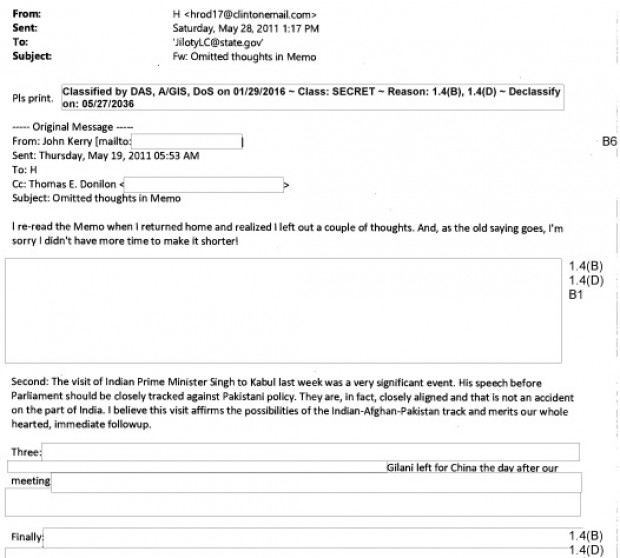Saudi police arrest 9 American ‘terror’ suspects: report
Riyadh (AFP) – Saudi authorities have arrested nine American citizens among 33 “terror” suspects rounded up over the past week, the Saudi Gazette newspaper reported Sunday.
Four Americans were arrested last Monday and five others over the past four days, the paper reported, citing an unidentified source.
Washington, a strong ally of Riyadh, confirmed it was aware of the report but declined to elaborate.
A US State Department official, speaking on condition of anonymity, told AFP: “We are aware of reports alleging that several US citizens were detained in Saudi Arabia.
“The Department of State takes its obligation to assist US citizens abroad seriously. Due to privacy considerations, we have no further comment.”
The Saudi Gazette said the arrests also included 14 Saudis, three Yemenis, two Syrians, an Indonesian, a Filipino, an Emirati, a Kazakhstan national and a Palestinian.
It did not say if any of the “terror suspects” was linked to the Islamic State jihadist group, which has claimed several deadly attacks against security forces and Shiites in the kingdom since last year.
On Friday, a suicide bomber attacked a Shiite mosque in Eastern Province, killing four people before worshippers disarmed and tied up his accomplice who had fired on them.
IS, a radical Sunni group that considers Shiites heretics, did not claim that attack.
The Saudi Gazette said some 532 IS suspects accused of plotting attacks in the kingdom are being questioned ahead of their trial at the criminal court in Riyadh.
They are members of six cells arrested in “pre-emptive” raids across the kingdom and include a Saudi woman and a Filipina, the paper said.
Also on Sunday, the interior ministry said they were searching for nine suspects allegedly involved in an August suicide bombing that targeted a mosque inside a police headquarters, killing 15 people.
IS had claimed the attack in the southern city of Abha.
The ministry said in a statement that three other suspects, including a member of the kingdom’s special forces, had been arrested in connection with the Abha mosque bombing.
The oil-rich kingdom offered rewards of between one million riyals ($276,000) and seven million riyals ($1.87 million) for anyone who helps in the arrest of a suspect or thwarts an attack.
***
Meanwhile it is important to know and appreciate the work many are in fact doing by the U.S. intelligence community, they are quite aware of terrorists and their locations. It is gratifying that this work occurs with some success.
Four Lebanese arrested in Paris under US request: report
French authorities reportedly detained four Lebanese based on an arrest warrant issued by the United States, local daily As-Safir said Friday.
The newspaper identified the four men as Mohamad Noureddine, Mazen Al-Atat, Ali Zbib and Osama Fahs.
The report said that the French authorities did not inform Lebanese authorities of the arrest until Fahs’ relatives in Paris reported him missing to French police. This prompted the latter to contact the Lebanese embassy in the capital to inform it of the detention of four of its nationals.
The daily added that preliminary information disclosed that French authorities had no charges against any of the four men, but it briefed Lebanese authorities on a U.S. arrest warrant issued against them.
(Note the date and the date of the arrests from Treasury. )
Noureddine was targeted in sanctions by the U.S. Treasury Department Thursday, along with another Lebanese Hamdi Zaher, for his alleged activity in money laundering at the behest of Hezbollah.
The department targeted Noureddine and Zaher for providing financial services to Hezbollah, which the U.S. has designated a terrorist organization.
Treasury claims Noureddine has laundered money through his company called Trade Point International S.A.R.L. He is accused of using his network across Asia, Europe, and the Middle East to provide money laundering, bulk cash shipment, black market currency exchange and other financial services to clients, including members of Hezbollah.
The sanctions freeze any assets the two men have under U.S. jurisdiction and prohibit U.S. citizens from doing business with them.
The U.S. has sanctioned more than 100 individuals and entities associated with Hezbollah.





![[IMG]](https://prod01-cdn07.cdn.firstlook.org/wp-uploads/sites/1/2016/01/PastedGraphic-11-1000x660.jpg)
![[IMG]](https://prod01-cdn07.cdn.firstlook.org/wp-uploads/sites/1/2016/01/100128_140241_s455a_Redacted_crop-1000x785.jpg)
![[IMG]](https://prod01-cdn07.cdn.firstlook.org/wp-uploads/sites/1/2016/01/100209_135515_video_Redacted_crop-1000x785.jpg)
![[IMG]](https://prod01-cdn07.cdn.firstlook.org/wp-uploads/sites/1/2016/01/1w_qs0003_isuav_4934_090426_video_crop.jpg)
![[IMG]](https://prod01-cdn07.cdn.firstlook.org/wp-uploads/sites/1/2016/01/090826_062415_s455a_video_Redacted_crop-1000x801.jpg)
![[IMG]](https://prod01-cdn07.cdn.firstlook.org/wp-uploads/sites/1/2016/01/100107_062007_video_Redacted_crop-1000x785.jpg)
![[IMG]](https://prod01-cdn07.cdn.firstlook.org/wp-uploads/sites/1/2016/01/090825_133109_s455a_Redacted_crop-1000x801.jpg)
![[IMG]](https://prod01-cdn07.cdn.firstlook.org/wp-uploads/sites/1/2016/01/F-16-FISINT2_F16fighterOverTheGazaStrip_01.jpg)
![[IMG]](https://prod01-cdn07.cdn.firstlook.org/wp-uploads/sites/1/2016/01/S455O01_image-440x440.jpg)